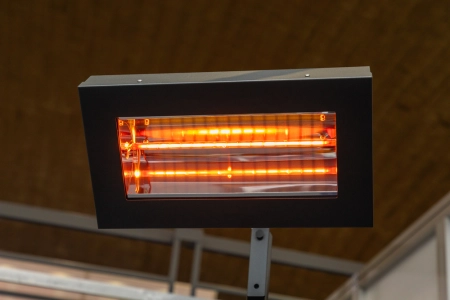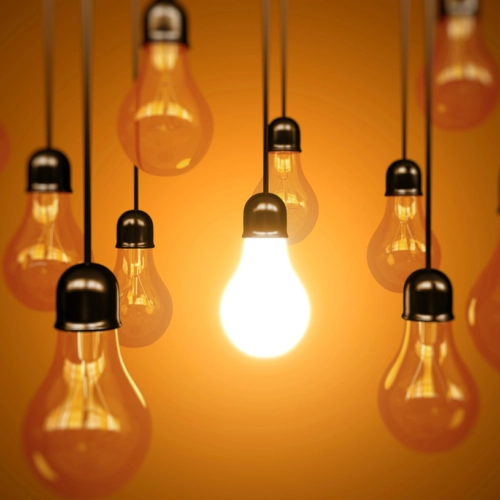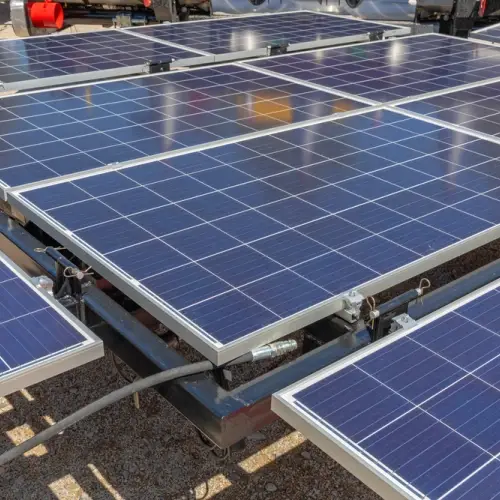
Joule's law, also known as Joule's first law, is one of the fundamental principles of physics that governs the behavior of electricity in conductive materials. It is often used to explain the thermal phenomenon that occurs when an electric current flows through a conductor.
If electricity flows through an electrical conductor, part of the kinetic energy of the electrons is transformed into heat, raising the temperature of the conductor. The heat is generated due to the collision experienced by the electrons with the molecules of the conductive material through which they circulate.
Definition of Joule's law
When a conductive material carries electricity, moving electrons interact with the atoms and molecules of the conductor, generating friction at a microscopic level. This friction produces heat, a phenomenon known as resistive heating.
The magnitude of this heat is governed by Joule's law, which can be expressed mathematically by the equation:
Q = I² · R · t
where:
- Q = Heat energy produced by the current. In the international system of measurements it is expressed in joules (J)
- I = Intensity of the current that circulates expressed in amperes (A)
- R = Electrical resistance of the conductor expressed in ohms (Ω).
- t = Time, in seconds (s)
The Joule effect
The amount of heat energy produced by an electric current is directly proportional to the square of the intensity of the current when it flows through the conductor and to the resistance that this conductor opposes to the passage of the current.
Examples of Joule's law
 This law has a wide variety of applications in our daily lives and in modern technology. Below I will mention some of the most prominent examples:
This law has a wide variety of applications in our daily lives and in modern technology. Below I will mention some of the most prominent examples:
- Filament light bulbs: Incandescent light bulbs are a classic example of the application of Joule's law. In these, a thin tungsten filament is heated to extreme temperatures when current is passed through it, emitting visible light.
- Heat-generating appliances: Many appliances rely on the Joule effect to operate: electric ovens, toasters, electric heaters... In all these cases, the aim is to generate thermal energy by passing electricity through their conductors.
- Efficiency of electric motors: In devices such as electric motors and transformers, resistive heating can affect efficiency.
- Induction brakes: Trains and roller coasters use induction brakes based on Joule's law. When a magnet passes near a conductor, an electric current is generated which, due to the resistance of the material, is dissipated as heat, helping to reduce the speed of the vehicle.
- Resistance welding: In industry, resistance welding is a technique that takes advantage of the Joule effect to melt and join metallic materials. An electric current is passed through the contact points, generating sufficient heat to weld the parts together.
- Ice melting systems: In cities, heating cables are used on roads and rooftops to melt ice during the winter. These cables convert electricity into heat using the Joule effect, improving safety and reducing maintenance.
Origins and history of the law
The discovery of this principle is attributed to the English physicist James Prescott Joule, who dedicated much of his life to the study of the interactions between electricity, magnetism and heat.
In 1841, Joule experimentally demonstrated that the heat generated by a conductor when an electric current passes through it is proportional to the square of the intensity of the current, the resistance of the conductor and the time during which the current flows.
However, it is also worth mentioning the physicist Heinrich Lenz, who independently formulated a similar principle. For this reason, in some texts it is also referred to as the Joule-Lenz law.
Drawback of the Joule effect
The main drawback of the Joule effect is the loss of energy that is transformed into heat and the overheating of electrical systems.
In the vast majority of applications, the Joule effect is undesirable. For this reason, some electrical and electronic devices require heat sinks to prevent excessive heating of the various components and/or devices.
Part of the supplied electrical power is converted into thermal energy which is dissipated in the form of heat. The heat produced is lost energy and therefore a decrease in efficiency.
Joule effect and the efficiency of a photovoltaic solar system
 The Joule effect can have a significant impact on the efficiency of a solar photovoltaic system, especially at the transmission and storage stage of the generated energy.
The Joule effect can have a significant impact on the efficiency of a solar photovoltaic system, especially at the transmission and storage stage of the generated energy.
When solar panels convert sunlight into electricity, the generated current must be transported through cables and stored in batteries or sent to the power grid. During this process, energy loss occurs due to resistive heating, described by Joule's law.
Losses in connecting cables
In a photovoltaic system, the current generated by the solar panels passes through cables that connect the different components, such as the inverter and batteries. If the cables have significant resistance, some of the energy is dissipated as heat, reducing the amount of electricity available for use.
Battery storage
When the generated electricity is stored in batteries, losses are also generated due to the internal resistive heating of the cells.
This can affect the charging and discharging efficiency of the batteries, reducing the amount of useful energy available.
Why is electricity transmitted over high voltage lines?
 Overhead power lines transfer electrical energy from electricity producers to consumers. These power lines have non-zero resistance and are therefore subject to the Joule effect, which causes transmission losses.
Overhead power lines transfer electrical energy from electricity producers to consumers. These power lines have non-zero resistance and are therefore subject to the Joule effect, which causes transmission losses.
To minimize transmission losses there are two solutions:
-
Minimize conductor resistance. Line resistance is minimized by using copper conductors.
-
Increase the voltage to reduce the current intensity according to Ohm's law. By reducing the intensity, the number of electrons circulating in the conductor decreases and, therefore, collisions with the conductor are reduced.